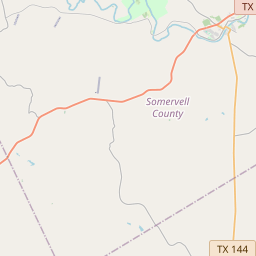Veterans of the Confederacy, Spanish American War, World War I and II
Historical marker location:






April 12, 1861: The Civil War begins with the Confederate attack on Fort Sumter, located in South Carolina's Charleston Harbor.
April 15, 1861: President Abraham Lincoln issues a call for 75,000 volunteers to serve in the Union Army to suppress the rebellion.
May 24, 1861: The first major land battle, known as the First Battle of Bull Run (or First Battle of Manassas), takes place in Virginia. It ends in Confederate victory.
September 17, 1862: The Battle of Antietam in Maryland becomes the bloodiest single-day battle in American history, with heavy casualties on both sides. The Union forces, commanded by General George McClellan, manage to halt Confederate General Robert E. Lee's advance into Union territory.
January 1, 1863: President Lincoln issues the Emancipation Proclamation, declaring that all slaves in Confederate-held territories are to be set free. However, the proclamation does not immediately free all slaves in the United States.
July 1-3, 1863: The Battle of Gettysburg in Pennsylvania takes place, resulting in a significant Union victory and inflicting heavy casualties on Confederate forces. It marks a turning point in the war.
November 19, 1863: President Lincoln delivers the Gettysburg Address, emphasizing the principles of liberty, equality, and the preservation of the Union.
April 9, 1865: General Robert E. Lee surrenders to Union General Ulysses S. Grant at Appomattox Court House in Virginia, effectively ending the Civil War.
April 14, 1865: President Lincoln is assassinated by John Wilkes Booth while attending a play at Ford's Theatre in Washington, D.C.
May 10, 1865: Confederate President Jefferson Davis is captured, signaling the collapse of the Confederate government.
December 6, 1865: The Thirteenth Amendment to the United States Constitution is ratified, officially abolishing slavery throughout the country.
While this timeline provides an overview of key events, it is important to note that the Civil War spanned over four years, from 1861 to 1865, and encompassed numerous battles, campaigns, and political developments that shaped the course of American history.
As one of the most visible programs of the Texas Historical Commission (THC), historical markers commemorate diverse topics in Texas history, including: the history and architecture of houses, commercial and public buildings, religious congregations, and military sites; events that changed the course of local and state history; and individuals who have made lasting contributions to the state, community organizations, and businesses.
Texas is home to the world's largest bat colony. The Bracken Bat Cave, near San Antonio, is home to millions of Mexican free-tailed bats.
In the late 19th century, Somervell County became a prominent center for agriculture and ranching. Cotton was the main crop grown in the county, and many farms and plantations flourished during this time. Additionally, the discovery of large limestone deposits in the county led to the establishment of several quarries, which became an important industry for the area.
One of the most significant events in Somervell County's history occurred in the early 20th century. In 1929, construction began on the Glen Rose Dam, which created the picturesque Lake Granbury. This provided water for irrigation and recreational opportunities, leading to the growth of tourism in the area.
Today, Somervell County continues to thrive with a diverse economy that includes tourism, agriculture, and small businesses. The county is known for its natural beauty, with attractions such as the Dinosaur Valley State Park, which features fossilized dinosaur footprints, and the Fossil Rim Wildlife Center, a popular safari park. The historic downtown area of Glen Rose remains a charming destination for visitors, showcasing its rich history through numerous preserved buildings and museums.
Somervell County Timeline
This timeline provides a condensed summary of the historical journey of Somervell County, Texas.
- 1849 - Somervell County is established as a county by the Texas state legislature.
- 1850 - The first settlers begin arriving in Somervell County.
- 1852 - The county's first post office is established at Glen Rose.
- 1860 - The population of Somervell County reaches 604 residents.
- 1861 - The Civil War begins, and many men from Somervell County join the Confederate Army.
- 1875 - The Texas Central Railroad is completed, passing through Glen Rose and boosting the local economy.
- 1881 - Dinosaur tracks are discovered along the Paluxy River, leading to increased tourism and scientific interest in the area.
- 1906 - The creation of the Brazos River Authority brings hydroelectric power to Somervell County.
- 1929 - The Great Depression heavily impacts the county's agricultural and oil industries.
- 1969 - The Comanche Peak Nuclear Power Plant is completed, providing a major source of employment and revenue for Somervell County.
- 1990 - The population of Somervell County reaches 6,333 residents.
- 2013 - The creation of the Fossil Rim Wildlife Center attracts tourists from around the world.
- 2019 - Somervell County celebrates its 170th anniversary since its establishment.